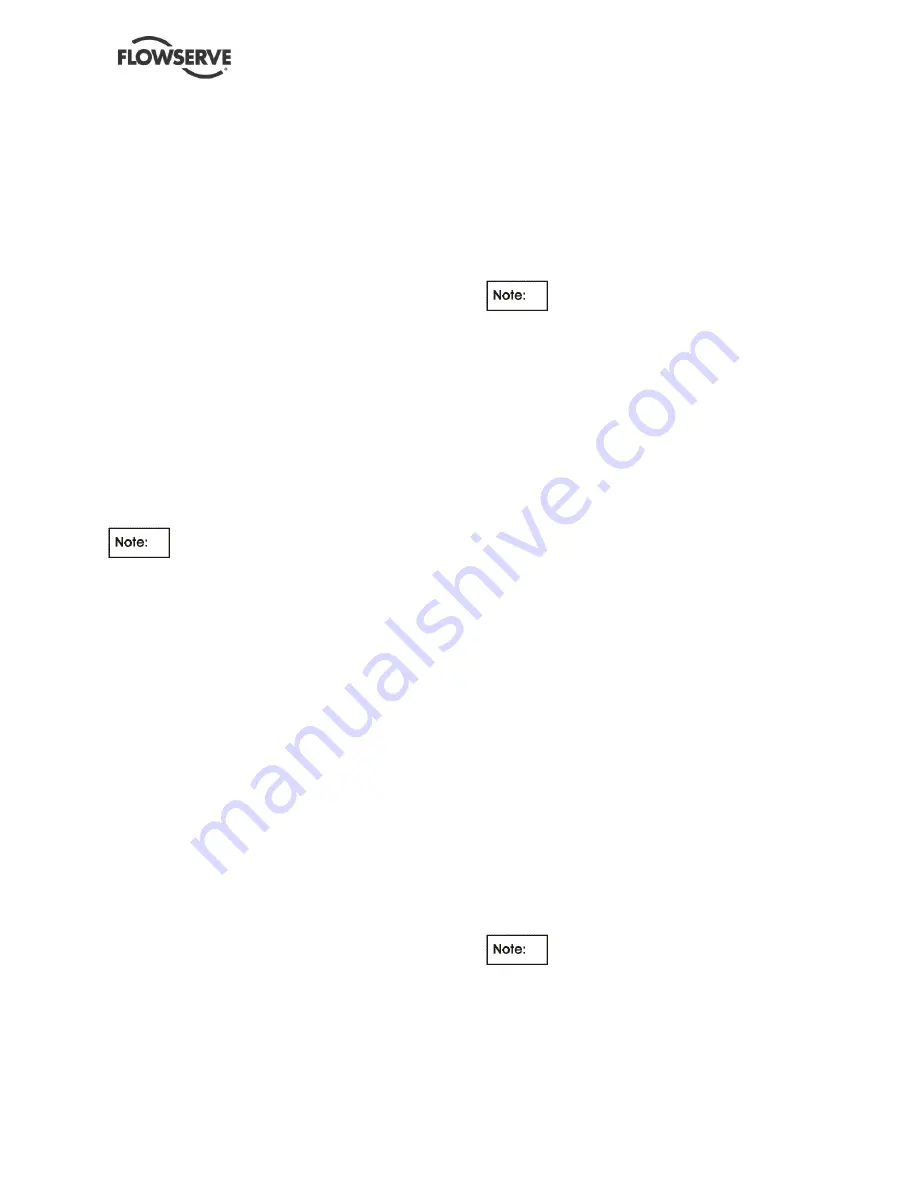
WIK USER INSTRUCTIONS ENGLISH BO2662 5/09
Page 35 of 76
9) Check readings of the following instruments:
a) Pressure gauge in lube oil console should
read pressure specified in lube oil schematic
drawing in the back of this manual
b) Lube oil cooler inlet and outlet temperatures
and lube oil inlet and outlet temperatures for
bearings and clutch (if applicable) should
read temperatures specified in lube oil
schematic drawing
5.8
Operation
5.8.1 Checks and minor adjustments
With the pump put on line in accordance with the
procedures under section 5.7 above, it should run
quietly and smoothly with little attention once the
temperature of the bearings and the temperature in
the seal flush system stabilize; usually after 60
minutes of pump operation. During these first 60
minutes and periodically afterwards, monitor
indicators and alarm circuits, make any necessary
minor adjustments, and perform essential servicing;
the fundamental tasks are outlined below.
For readings in alarm circuits, see your
plant's procedures.
1) Monitor alarm circuits, lube oil system, cooling
water systems, and seal flush system, according
to your plant's setup and procedures for pump. If
alarm is activated, shut down pump (see section
5.9), and correct cause (see section 7 and lube
oil console manufacturer's data in section 10).
2) Monitor discharge pressure of pump. If pressure
of pump drops suddenly shut down pump (see
section 5.9) and correct cause (see section 7).
3) After first 10 to 15 minutes of pump operation,
check for leakage around shaft sleeves; for
pumps equipped with mechanical seals, leakage
shall not be evident;
4) Check that readings of indicators of temperature,
pressure, and flow for these components and
systems are as given in the engineering
drawings in the back of this manual and your
plant's procedures:
a) Cooling water system for heat exchangers
b) Cooling water system for seal housings, and
c) Seal flush system
5) Check that temperature of lube oil at these
indicators is as given in lube oil schematic
drawing:
a) Inlet temperature indicator of heat
exchanger
b) Outlet temperature indicators of pump
bearings
6) Check that lube oil outlet temperature indicator
of driver bearings and speed increaser gear
(when installed) are as required by the
manufacturer (see driver and speed increaser
gear manufacturer's data in section 10.)
7) Check lube oil inlet temperature indicator of
pump bearings and driver and outlet
temperature indicator of heat exchanger;
readings should be approximately same.
Because heat that is generated by a
bearing is constant, a change in ambient
temperature may require additional cooling of the
bearings. That is, when the ambient or cooling water
temperature is hotter than usual, it may be
necessary to increase the flow of cooling water
through the lube oil heat exchanger in order to
decrease the temperature of the lube oil, and also to
adjust the pressure reducing valve to maintain the
prescribed system pressure; but adjustment, in each
case, shall be such that the lube oil temperature,
flow, and pressure at the bearings of the pump is as
specified in the lube oil schematic drawing.
8) Check lube oil discharge pressure indicators that
are located in piping immediately downstream of
pressure reducing valve and in instrument panel;
indicators should read inlet pressure of lube oil
at pump bearings and driving units as given lube
oil schematic drawing.
9) Check lube oil discharge pressure indicators that
is located immediately downstream of main lube
oil pump; indicator should read setting given in
lube oil console manufacturer's data (see
Section 10) for back pressure control valve. If
reading is off, adjust valve so that indicator
reads given setting. The other indicator should
read zero. For information on valve, see valve
manufacturer's instructions in section 10.
10) In step 8, if discharge pressure indicator did not
read inlet pressure of lube oil at bearings of
pump and driving units as given in lube oil
schematic drawing, adjust pressure reducing
valve so that indicators read specified inlet
pressure. For information on valve, see valve
manufacturer's instructions in section 10.
If the pressure of the main lube oil pump
decreases below the required pressure (see lube oil
schematic drawing) the low lube oil pressure switch
should activate an alarm, and if pressure continues
to decrease the auxiliary or spare lube oil pump
pressure switch should activate to energize the
spare or auxiliary lube oil pump and the main lube oil
pump should shut down. An additional pressure
switch is incorporated to de-energize power to driver
















































